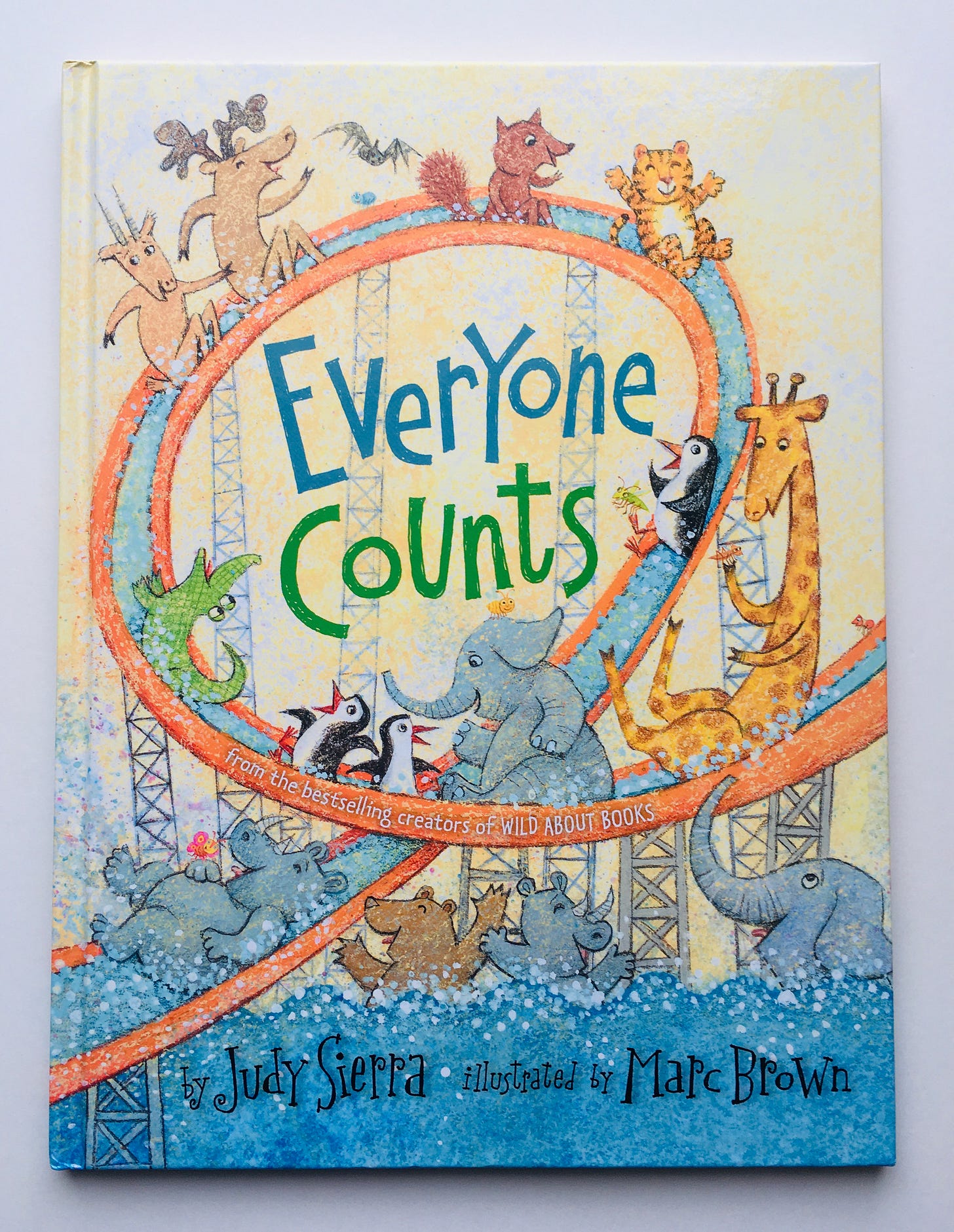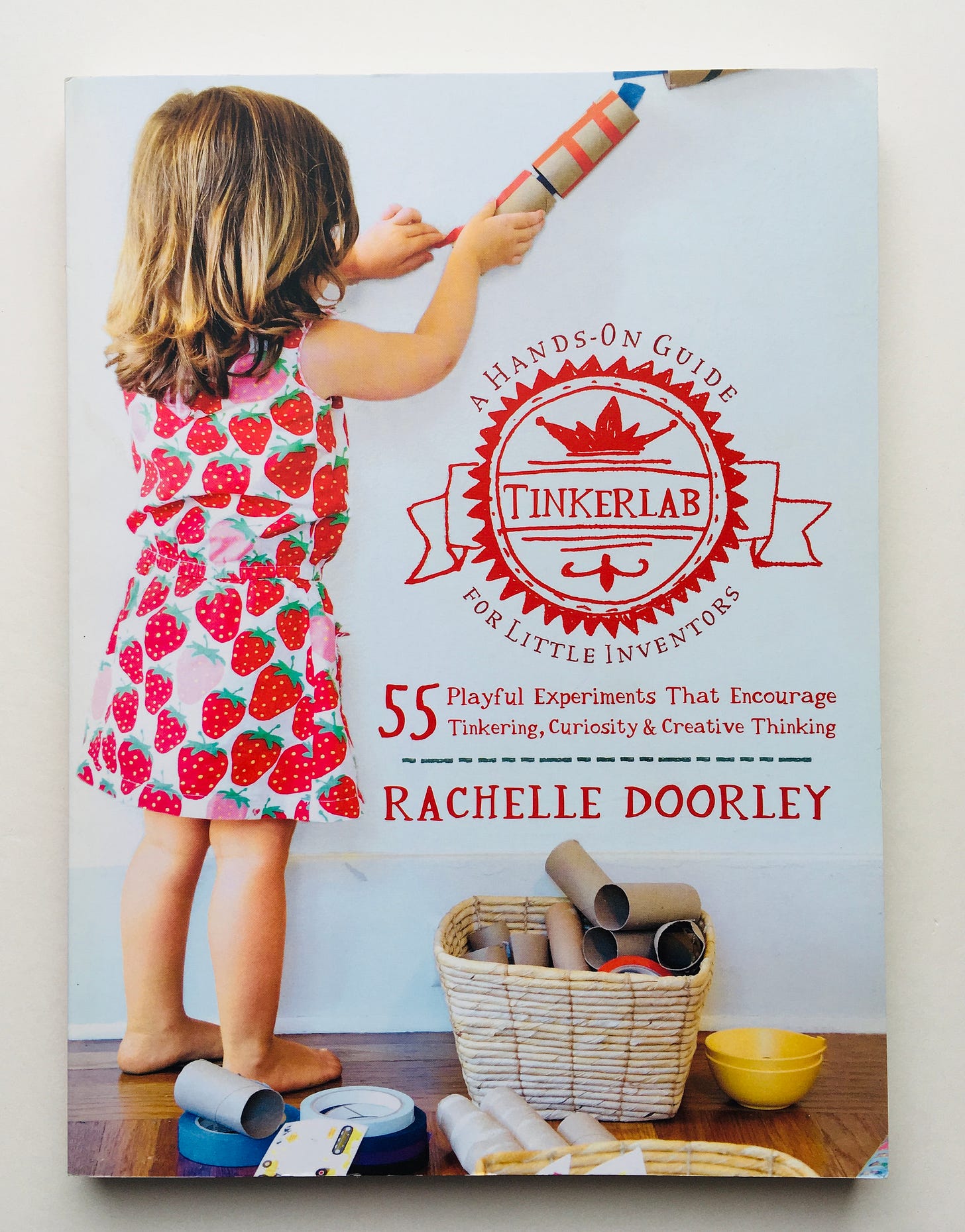Can we read? No. 25
+ News item
Hello there, good people. How are you? Really, how are you? I am having an equally horrible and comforting re-entry back into my real life post-holidays (and 18 straight days off), which isn’t to say anything is new, just that even small shifts can be hard. If that’s you too, hi! I see you! Let’s take some deep breaths and remember we only have to do it (anything, all of it) one day at a time.
Moving on: here’s a news item for you 🗞 On Friday you’ll be receiving the first of a new part of this newsletter: it’s called (How) Can we read? and in it I’ll take everything I know about raising readers and building a culture of books and literacy in your home and share it with you, bit by bit. No reviews in these, just what the name implies — the how-to, tips-and-tricks part of this reading business, which I offer from my own knowledge and experience. (How) Can we read? will come out on the second Friday of every month. I’m kicking it off later this week on the topic of book storage (and how to manage it all) and reading nooks.
As with anything new I try, if you have any feedback, hit me up 😉 (I created this other part of the newsletter entirely because of your feedback, so it works.)
Okay, on with it today.
The Smallest Girl in the Smallest Grade by Justin Roberts, illustrated by Christian Robinson (2014)
I originally bought this book because my youngest child is tiny — she has clung to the bottom-most rung of the growth charts since three months old, and though she makes up for what she lacks in stature and weight with the spirit of a warrior-slash-fire creature 🔥 👹 , I snapped up this book when I saw it thinking it was going to be a good message for her: she’s little but she’s mighty and I am 100% here for it. Instead, this is the story of a girl who is less, let’s say, ferocious, and more quietly brave. Sally McCabe is physically small — though that is more a visual cue about her unassuming nature than anything else — but she’s not timid. When she sees her classmates (and even, one time, her classmate’s parent) continually treating each other badly — teasing, gossiping about, and bullying one another — she speaks up, stepping straight out of the lunchroom line and putting her finger in the air, saying, “I’m tired of seeing this terrible stuff. Stop hurting each other! This is enough!” Other hands and fingers join in until she has started a movement that causes everything to change. Robinson’s bright, simple illustrations show all the things this little girl notices over and over — making clear how common and insidious this pain is, for almost everyone — as Roberts’ prose urges kids, with a refreshing lack of didacticism, to not let these things slide, that one voice can matter. The overarching lesson of Sally McCabe is: SAY SOMETHING. As a parent, as a person, as a little girl who sometimes spoke up and sometimes didn’t: this is a welcome message, and one I think we all need.
Everyone Counts by Judy Sierra, illustrated by Marc Brown (2019)
Though it’s easy to pigeonhole Marc Brown as the creator of the Arthur books — the man has written more than 100 Arthur titles, so it’s understandable — his body of work is actually much larger(!), and he lends his considerable experience and talent to Judy Sierra’s similarly long-standing and outstanding career here to great success. When a bunch of animals get together to take over an abandoned building, fix it up, and turn it into an amusement park, everyone is down for working together, even the insects — except the rhinos, who act big and tough and annoying in an effort to leave the bugs out. Sierra’s ability to wrestle a rhyme scheme into something that rolls off the tongue easily and with great pleasure is commanding — she does this again and again in her books (we love Counting Crocodiles, which I wrote about in my Spotlight On: Counting Books last summer), this one included. When the insects show up to teach the rhinos a lesson the reader learns one too: it’s not just that we’re all better when we work together, it’s that everyone counts. Amen.
The Seven Silly Eaters by Mary Ann Hoberman, illustrated by Marla Frazee (1997)
If there’s anyone out there with greater talent at writing absolutely delightful and complex rhymes than Mary Ann Hoberman, I don’t know who it is. She must be smart too, because teaming up with Marla Frazee on this book not only guaranteed a great read (Frazee is, I think, my favorite illustrator), but resulted in what I consider one of the best children’s books of the last 30 years. It’s the story of a mother with six children, each of whom have one particular thing they will eat and that’s it, which she learns as she has each baby in succession. What starts out as an act of service and devotion to her growing family soon becomes burdensome (oh how I want to reach through the pages of this book, pluck this mama up, and drop her in a steaming hot bath somewhere in a house alone) but she bears it with great love. On her birthday, her dear crew gets together to make the one recipe that includes all the things they are each willing to eat: “a pink and plump and perfect” birthday cake. This book is so heartwarming and fun to read it’s hard for me to even explain it: just get it, however you can, and enjoy for yourself.
The Nursery Collection by Shirley Hughes (1985)
I have mentioned my abiding love for Shirley Hughes before (see issue No. 6), not only because I remember many of her books from my own childhood, but because she captures children and family life in an honest, authentic way that doesn’t seem to be on offer from anyone else. Her stories — even her poetry — are all about the small things that are unimportant to grownups but that carry great meaning and weight for children, and this talent is evident even in her books for the smallest among us. The Nursery Collection is just that — a collection of her titles for babies and toddlers. The stories within (Bathwater’s Hot was our go-to bath time read for several years; we can still recite it from memory) are short, colorful, and full of interesting details that are fun to look at and discuss. Hughes also has a poetic, rolling way with words that forever make these deeply appealing to me as read-alouds — I love saying lines like “Grasshoppers, greenflies, gooseberries, cat’s eyes, green lettuce, green peas, green shade from green trees, and grass as far as you can see, like green waves in a green sea.” (The only other title that achieves this level of assonance for me is Jamberry by Bruce Degen, and I still love reading that book for this specific reason). This is a warm and truly lovely choice for anyone 2yo and under.
Tinkerlab: A Hands-On Guide for Little Inventors by Rachelle Doorley (2014)
I have written before re: my feelings about process art. In issue No. 18 I reviewed my favorite title by MaryAnn Kohl, whose books first taught me about the idea of “process over product” and helped shape my fairly vehement convictions about avoiding narrow, single-outcome art experiences for my children — in addition to Kohl’s work I’ve found great value in both The Artful Parent and The Artful Year by Jean Van’t Hul, and on a much more cerebral level, The Hundred Languages of Children: The Reggio Emilia Approach to Early Childhood Education, edited by Carolyn Edwards, Lella Gandini, and George Forman (the latter is a goldmine, in my opinion). Tinkerlab falls into this slim category of excellent, helpful, and actionable books for me — with the major benefit that it goes beyond art experiences to address making of all kinds, with meaty sections on what compromises a tinkerlab (including habits of mind), and hands-on experiences of all kinds. These are invitations to play that not only include all the senses — a huge plus for my household, where offering different sensory experiences is not only fun but also necessary to supporting my child with sensory processing issues — but encompasses many areas of learning, in full STEAM fashion.
Ten Tinkerlab Habits of Mind:
Make room for creativity
Encourage questions
Listen actively
Be curious
See mistakes as gifts
Embrace a good mess
Accept boredom as a tool for self-discovery
Step back and enjoy the flow
Spend time outdoors
Think of everything as an experiment
When my husband and I talk about what we want for our kids, lots of our discussion ends up centering around making of all kinds (“making,” in these conversations, being a short of shorthand for being capable and having agency), so that is increasingly where we place our resources and energy. Along with Making Makers: Kids, Tools, and the Future of Innovation by AnnMarie Thomas (plus a garage workshop and a larger-than-seemingly-normal tolerance for mess of all sorts), this title has given us something real to go on, a base to build upon. If you’re interested in helping your children strengthen their inherent skills of inquiry, experimentation, creativity, exploration, and critical thinking (I mean it when I say inherent — they’re absolutely born with these mental muscles; it’s our job to give them the opportunities to flex them), this book is a great tool to have in your toolbox.
(Oh yes, I ended on a pun. You’re welcome.)
😘






